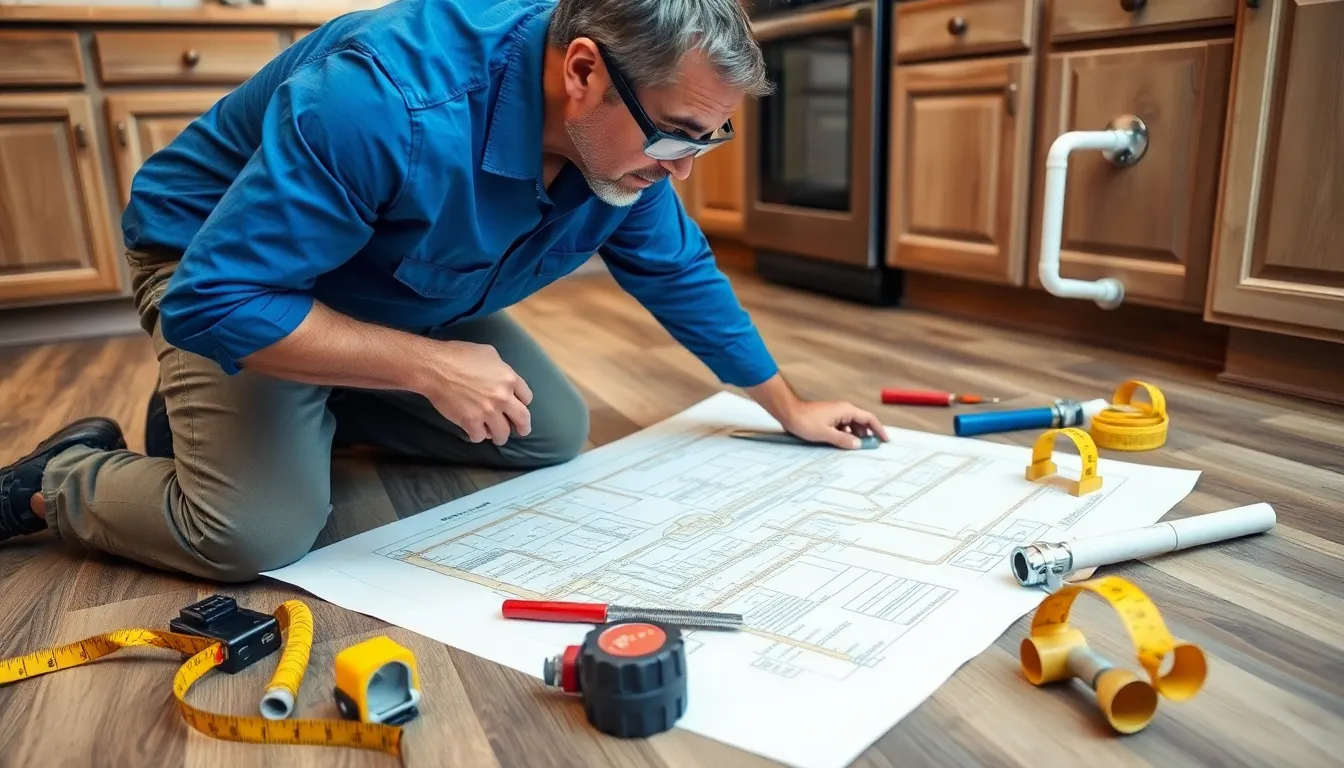Imagine opening your kitchen cabinets only to find a tangle of pipes that seem to lead nowhere. Relocating kitchen plumbing lines can transform your cooking space, but it’s not just about aesthetics; it’s about functionality and efficiency. Whether you’re remodeling or simply reconfiguring your layout, understanding the best practices for this task is crucial.
Navigating the complexities of plumbing requires a blend of expertise and careful planning. From ensuring proper drainage to selecting the right materials, each step plays a vital role in achieving a seamless installation. This article will guide homeowners, property managers, and DIY enthusiasts through essential tips and insights, making the process smoother and more successful. Get ready to dive into the world of kitchen plumbing and discover how to create a space that’s both beautiful and practical.
Overview of Kitchen Plumbing Relocation
Relocating kitchen plumbing lines enhances the kitchen’s aesthetics and functionality. Careful planning ensures efficient water flow and proper drainage. While relocating plumbing lines may seem straightforward, complexities arise, requiring expertise in pipe materials and layout configurations.
Plumbing relocation involves a few essential steps:
- Assessment of Existing Infrastructure: Evaluate the current plumbing system, identifying which lines to move and where to reposition them. Consider current and future kitchen designs during this assessment.
- Permitting: Confirm necessary permits for plumbing changes with local authorities. Compliance with plumbing codes ensures safety and adheres to legal requirements.
- Material Selection: Choose suitable materials such as PEX, PVC, or copper. Each material offers various benefits, including cost-effectiveness, flexibility, or durability.
- Professional Assistance: Consult with licensed plumbing professionals to ensure proper installation and adherence to local building codes. Expertise minimizes the risk of future plumbing issues.
- Drainage Solutions: Design a drainage system that accommodates the new layout. Effective drainage prevents plumbing backups and ensures smooth operation.
Following these practices simplifies kitchen plumbing relocation and enhances the overall function of cooking spaces.
Planning Your Relocation
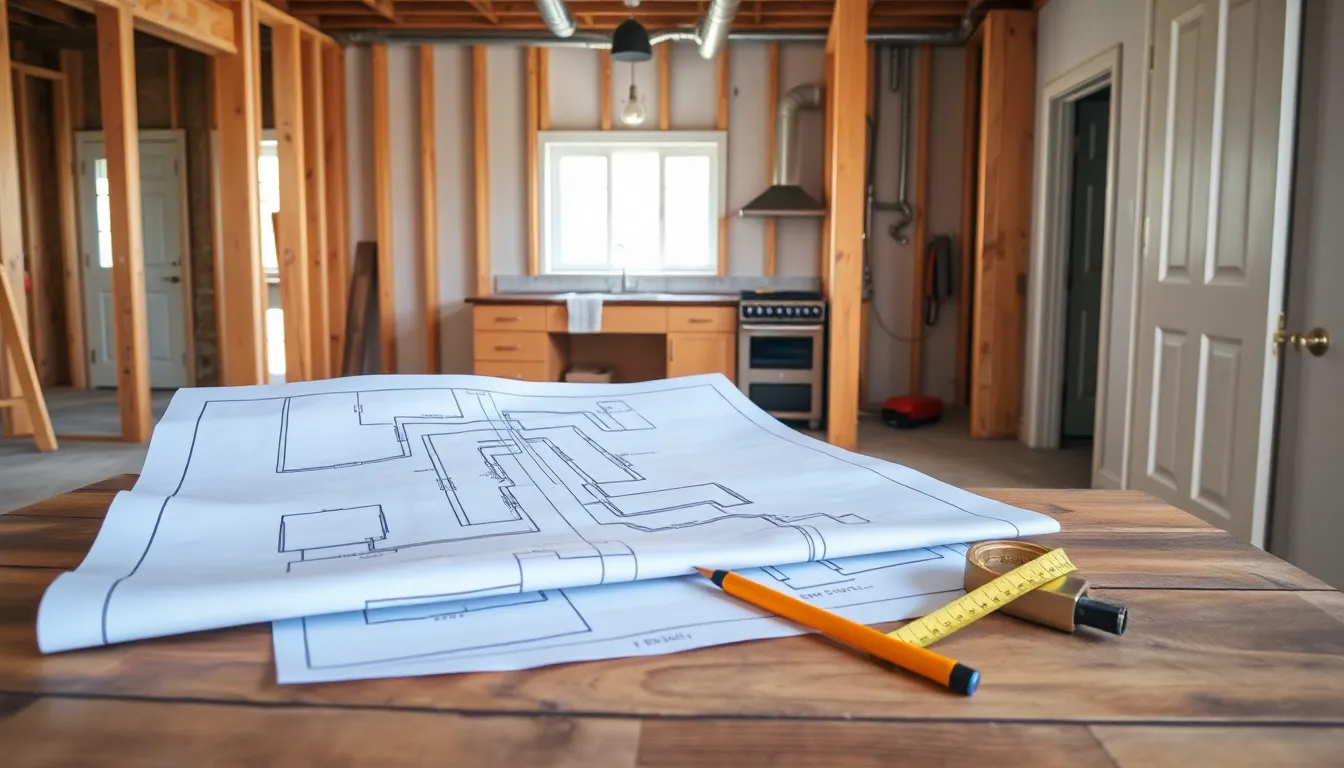
Planning is crucial for a successful kitchen plumbing line relocation. Proper steps ensure efficiency and compliance with local plumbing codes.
Assessing Your Current Plumbing
Assessing current plumbing lines involves evaluating existing infrastructure thoroughly. Identify water supply lines, drain lines, and venting systems. Examine connections to sinks, dishwashers, and refrigerators. Taking note of existing layouts helps in planning the new configuration effectively.
Document any obstructions, like walls or appliances, and determine what materials are currently in use, such as PEX, PVC, or copper. Understanding the setup prevents complications during relocation and keeps plumbing installation streamlined.
Creating a Relocation Blueprint
Creating a relocation blueprint requires a detailed plan showcasing the new plumbing layout. Include location details for all fixtures, including sinks, gas lines, and appliances. Outline all water supply and drainage routes, ensuring all lines meet code requirements. Incorporate necessary elements like shut-off valves and cleanout access points to maintain system cleanliness.
Ensure your design optimizes functionality while maintaining aesthetics for the kitchen. Consulting with licensed plumbing professionals during this phase fosters effective planning and installation, guaranteeing all aspects are covered.
Tools and Materials Needed
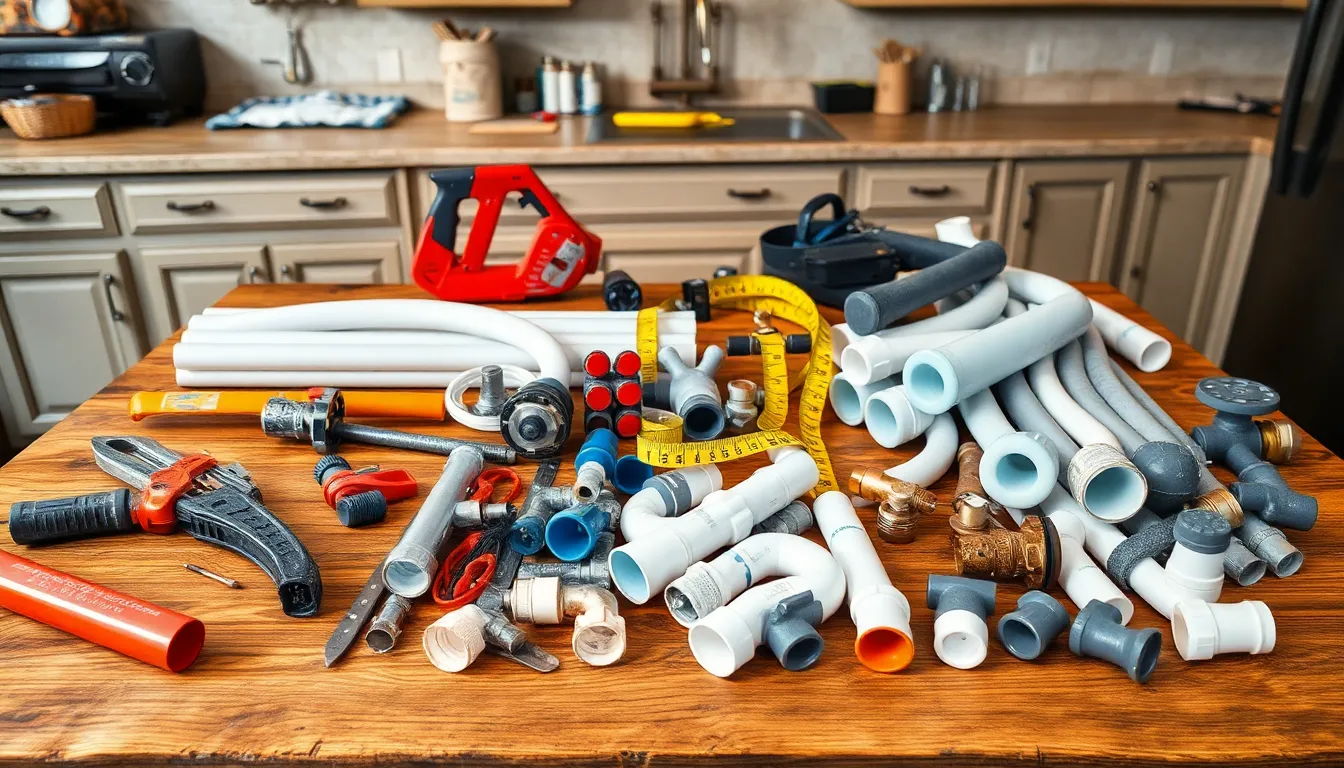
Relocating kitchen plumbing lines requires specific tools and materials to ensure efficiency and effectiveness. Utilizing the right equipment simplifies the process and enhances the overall outcome.
Essential Tools for the Job
- Pipe Wrench: A pipe wrench grips pipes securely, facilitating connections and disconnections without damaging the surface.
- Adjustable Wrench: An adjustable wrench accommodates various sizes of fittings, providing versatility for different plumbing components.
- Saw: A saw cuts through piping materials effectively, particularly when repositioning or removing sections of pipe.
- Drill: A drill is invaluable for creating holes for new piping routes, securing fixtures, or installing brackets.
- Measuring Tape: Measuring tape ensures precise measurements during planning and installation, promoting a proper fit for all plumbing lines.
- Level: A level checks the alignment of pipes, ensuring correct installation for effective drainage and functionality.
- Plumbers’ Tape: Plumbers’ tape provides leak-proof seals at threaded connections, enhancing the durability of installations.
Recommended Plumbing Materials
- PEX Pipes: Flexible and easy to install, PEX pipes resist scale and chlorine, making them ideal for kitchen plumbing.
- PVC Pipes: PVC pipes are lightweight and cost-effective, suited for drainage and venting systems in kitchen installations.
- Copper Pipes: Copper pipes offer strength and durability, with excellent resistance to corrosion, suitable for water supply lines.
- Fittings: Various fittings, such as elbows and tees, are necessary to connect pipes at different angles and junctions.
- Valves: Shut-off valves provide control for water supply, ensuring manageable maintenance and emergency situations.
- Sealants: High-quality sealants ensure leak-proof connections, maintaining a secure and efficient plumbing system.
- Insulation: Insulation helps prevent condensation and freezing in cold environments, protecting plumbing lines from damage.
Following these guidelines for tools and materials ensures a smooth relocation process for kitchen plumbing lines. Proper preparation aids in achieving high-quality plumbing service.
Step-by-Step Guide to Relocating Kitchen Plumbing Lines
Relocating kitchen plumbing lines involves a systematic approach to ensure efficiency and compliance with local regulations. Following these steps guarantees a successful kitchen renovation.
Disconnecting Existing Lines
Disconnect existing water supply and drain lines before beginning the relocation. Shut off the main water supply to prevent leaks. Use pipe wrenches to carefully detach the connections without damaging the pipes. Label each line to simplify reinstallation. Remove any fixtures that could obstruct the new layout, ensuring a clean working space.
Installing New Lines
Install new plumbing lines according to the pre-established blueprint. Choose appropriate materials such as PEX, PVC, or copper based on the requirements of the new design. Secure pipes with specialized fittings, ensuring tight seals to prevent leaks. Maintain an adequate slope in drain lines for proper drainage and avoid clogs. Follow all local codes during installation to guarantee safety and compliance.
Testing for Leaks
Once the installation is complete, restore water supply to the system gradually. Monitor connections for any signs of leaks. Conduct a thorough inspection, checking each joint and fixture. Run water through the system, observing for leaks for at least 30 minutes. Address any issues immediately to avoid future complications. Ensuring all lines are leak-free contributes to the reliability of the plumbing system.
Common Mistakes to Avoid
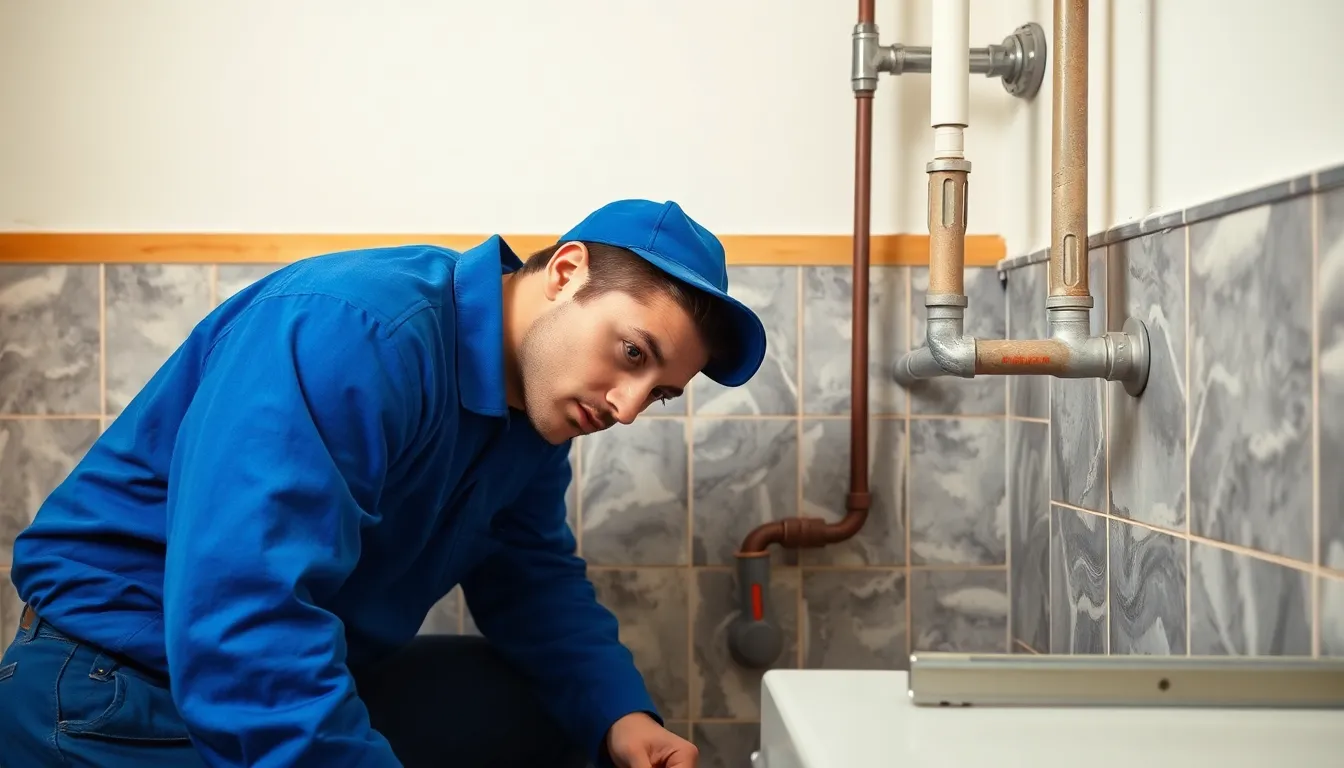
Avoiding mistakes during the relocation of kitchen plumbing lines is essential for a successful project. Some common pitfalls include:
- Neglecting Permits: Ignoring the need for necessary permits can lead to compliance issues. Always check local plumbing codes before commencing any work.
- Overlooking Existing Layout: Failing to consider the existing plumbing layout can result in miscalculations. Assess current lines and mark their locations clearly.
- Using Incorrect Materials: Selecting inappropriate materials can compromise plumbing integrity. Choose between PEX, PVC, and copper based on project specifications.
- Improper Slope Installation: Maintaining an improper drainage slope can lead to water pooling. Ensure a slope of 1/4 inch per foot for drain lines to facilitate proper flow.
- Rushing the Planning Phase: Skipping detailed planning can cause costly mistakes. Develop a thorough blueprint that includes all new line placements.
- Ignoring Ventilation Needs: Overlooking venting systems can result in drainage issues. Ensure all fixtures are properly vented to maintain effective air circulation.
- Failing to Test After Installation: Neglecting to check for leaks can lead to future damage. Conduct thorough inspections and tests before finalizing the project.
- Not Seeking Professional Help: Avoid attempting extensive plumbing work without experienced assistance. Consult licensed plumbing professionals to ensure all aspects of the relocation comply with local regulations.
Conclusion
Relocating kitchen plumbing lines can significantly improve both the look and functionality of a cooking space. By following best practices and ensuring thorough planning homeowners can navigate the complexities of plumbing installations with confidence. It’s essential to assess existing infrastructure select the right materials and consult professionals when necessary.
Avoiding common pitfalls will lead to a smoother relocation process and help maintain the integrity of the plumbing system. With careful attention to detail and adherence to local codes the results can transform the kitchen into a more efficient and aesthetically pleasing environment. Embracing these strategies ensures a successful plumbing relocation that meets both practical needs and design aspirations.
Frequently Asked Questions
What are the benefits of relocating kitchen plumbing lines?
Relocating kitchen plumbing lines enhances aesthetics and functionality. It allows for a more efficient kitchen layout and can improve the overall flow and usability of the space. Additionally, it can help in avoiding plumbing issues related to outdated or poorly positioned lines.
How do I plan for relocating kitchen plumbing?
Start by assessing your existing plumbing infrastructure, including water supply and drainage lines. Document any obstructions and create a detailed relocation blueprint. Consult with licensed plumbing professionals to ensure compliance with local codes and optimize both functionality and aesthetics.
What materials should I use for plumbing relocation?
Recommended materials include PEX, PVC, or copper pipes, depending on your specific needs and local building codes. Ensure you also have the necessary fittings, valves, sealants, and insulation to complete your plumbing setup.
Do I need permits to relocate kitchen plumbing?
Yes, obtaining the necessary plumbing permits is crucial to comply with local building codes. Failing to secure permits can lead to fines or complications during inspections. Always check your local regulations before starting the relocation process.
What tools are essential for relocating kitchen plumbing?
Essential tools include pipe wrenches, adjustable wrenches, saws, drills, measuring tapes, levels, and plumbers’ tape. These tools help efficiently handle pipe cutting, installation, and ensuring everything is properly aligned.
What common mistakes should I avoid during plumbing relocation?
Avoid neglecting to obtain permits, overlooking current plumbing layouts, using incorrect materials, improper drainage slopes, rushing through planning, ignoring ventilation needs, and failing to test for leaks post-installation. Awareness of these mistakes can lead to a smoother relocation process.
Should I hire a professional plumber for this project?
Yes, consulting with licensed plumbing professionals is highly recommended. Their expertise helps ensure proper installation, compliance with local codes, and can save you from potential issues during and after the relocation process.
